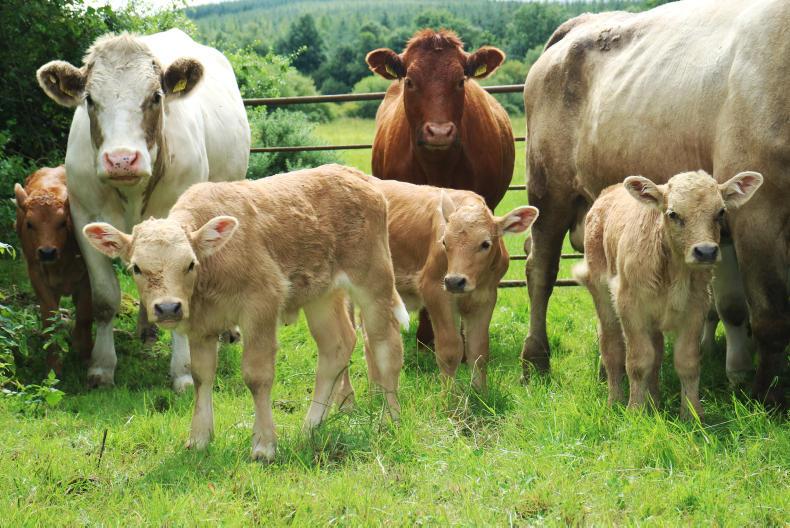Our demo will involve seven animals, including a calf, yearling, first-calver and mature cow.
Results collated by the Irish Cattle Breeding Federation (ICBF) show that the average Irish beef heifer calves down at 31.5 months.
This tells us that Irish farmers do not buy into two-year-old calving in general and paints a grim picture of the typical calving spread out there.
On the day, Bord Bia's Joe Burke will discuss the efficiencies around two year old calving from an environmental point of view.
At the Beef 2016 event last year, Teagasc specialists carried out a full cost analysis on the replacement strategy of a 40ha suckler beef farm, carrying 53 suckler cows and producing beef (SR: 170kg organic N/ha).
Calving home-bred replacements at 24 versus 36 months increased net profit per cow (excluding labour) by almost €84 (€4,480 total).
The main turn-offs that we at the Irish Farmers Journal hear concern calving difficulty, hitting weight targets, stunting growth and negative knock-on effects.
The important thing to remember when calving heifers at two is that they do need some extra attention.
Bulls and AI
Unless he is excessively easy-calving, the sire used on your mature cows probably won’t be suitable for use on your heifers.
Target a bull with a calving difficulty of less than 5% with an accompanying reliability figure of >90%. The fact that most stock bulls won’t achieve a reliability figure this high means that those calving heifers at 24 months should consider AI.
ICBF specialists will discuss sire selection for heifers and the use of the index for selecting heifers themselves on the day.
It will also allow the option of synchronising using prostaglandin, which will be cheap at around €7/head and condense the heifer calving pattern.
In terms of successful 24-month calving, age itself really is irrelevant. Regarding the puberty onset and the development of the reproductive system, weight is the barometer.
Mature weight
The target for a beef heifer is to be 60% of her mature weight at breeding, at which point 90% of animals will be cycling, and 85% of mature weight at calving.
Mature weight is determined by breed. For pure continentals you’re talking 650-700kg, while more early-maturing or first cross cows will be closer to 600kg – though a British Friesian-cross can often compete with continentals on the scales.
The important thing to remember is that mature weight in a suckler cow is not reached until around five years of age.
Yes, she has calved smaller than your older cows. Yes, she will appear to be smaller than your older cows in her second season. This is normal – you have not stunted her growth. In weight terms, we want to be breeding a continental animal at a minimum of 420kg.
Fertility
The final prevailing issue with calving at two concerns the knock-on effect on our animal’s fertility. Will she slip back after the combined shock to her system of calving and suddenly having to rear a calf?
All going well (easy calving/proper condition management/mineral nutrition) she shouldn’t slip.
But just in case, best practice is to calve heifers at the beginning of the season to give them some leeway to slip back slightly.
A well-bred, fertile animal will reclaim these lost days later on in her production life.
Calving early on also means that our potentially difficult calvings will be coming at the beginning of the season, when we’re most switched on and our enthusiasm and energy levels are at their peak. Once calved, these heifers should receive 1-2kg of a simple energy concentrate until turnout to grass to prevent condition loss and help the resumption of reproductive cyclicity.
We want your opinions – participate in our livestock demos by clicking here.
Livestock demonstrations at the National Ploughing Championships
Cattle demonstrations locked and loaded for this year's Ploughing






 This is a subscriber-only article
This is a subscriber-only article










SHARING OPTIONS: